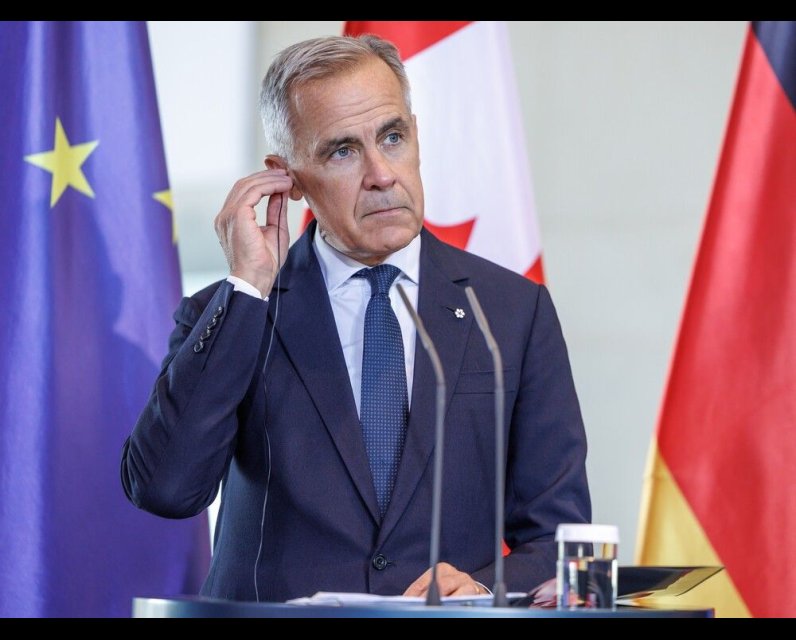Could Canadian LNG ambitions put Washington on edge?

WASHINGTON, D.C. — Canadian and American leaders have long touted the idea of North American energy dominance, building one of the world’s most deeply integrated energy markets, complete with cross-border pipelines and power grids.
In recent years, however, left-leaning politicians on both sides have worked to reduce fossil fuel dependence and accelerate the transition to clean energy.
The political winds changed with the return of Donald Trump, who views attempts to shift to renewables as premature and bad policy. Instead, he is renewing U.S. investment in oil and gas.
Meanwhile, Canada’s energy program has entered a new phase. Prime Minister Mark Carney has broken from Justin Trudeau’s cautious stance on liquefied natural gas (LNG) exports to embrace a more diversified approach that includes critical minerals, clean energy, nuclear, hydro resources, and LNG export ambitions on both the East and West Coasts.
“Our government is in the process of releasing half a trillion dollars of investment in energy infrastructure, port infrastructure,” Carney said in Europe recently. “Some of the examples … will include reinforcing and building on the Port of Montreal, Contrecoeur; a new port, effectively, in Churchill, Manitoba, which would open up enormous LNG plus other opportunities.”
These East Coast plans complement projects already underway on the West Coast, reflecting what Carney told Trump at the G7 in June: He aims to make Canada “an energy superpower.”
Canada’s new East Coast LNG ambitions are ramping up just as Europe looks to diversify its energy supply and find alternatives to Russian imports. The big question is whether Canada can establish this export capability in time to capitalize on the wave of European demand, and if so, whether it could challenge Trump’s plans for U.S. energy dominance.
Energy flowsThe U.S. already has eight LNG terminals — mostly on the Gulf Coast — exporting to Asia, Europe, and Latin America. Trump has aspirations for several more, including one for Alaska. This last one remains in the planning and development phase, but if successful, it would be the first major LNG export hub on the U.S. West Coast.
Canada currently has just one operational large-scale LNG terminal, in Kitimat, B.C., which came online earlier this year. A couple more West Coast terminals are under construction, and there’s a proposal to build a floating liquefaction and export facility. Targeting Asian markets, West Coast Canadian LNG exports could rival U.S. Gulf Coast exports — which traverse the Panama Canal — with shorter, more direct routes.
Since much of Canada’s natural gas supply is concentrated in B.C. and Alberta, and because pipelines are not in place coast to coast, eastern projects have been slower to develop. But now, planning is underway for a $15 billion facility off Newfoundland’s coast by Fermeuse Energy, including a nearly 400-kilometre pipeline. The New Brunswick government and energy partners, meanwhile, are discussing a possible LNG export terminal at Saint John, which might include a pipeline to Quebec. Finally, Carney has suggested that the Port of Churchill, the country’s sole Arctic deepwater port connected by rail, could be upgraded for LNG.
European leaders are thrilled by the prospect of Canadian LNG exports. Faced with an aggressive Russia, they are phasing out Russian oil, gas, and nuclear energy imports by the end of 2027. Export competition from the East Coast could mean better global competition and lower prices.
“Europe would like some redundancy,” says Heather Exner-Pirot, a senior fellow and director of Energy, Natural Resources and Environment at the Macdonald-Laurier Institute.
“Right now, they have to depend on the United States. If you’re a European country, you would like to have diversity of supply.”
Courting EuropeansFor Europe, getting LNG from Canada, rather than the U.S. Gulf Coast, would mean getting shipments faster and, potentially, with a lower emissions profile.
Dulles Wang, director for Wood Mackenzie’s Americas gas and LNG research team, points to the shorter sailing distances and notes that Canada’s “upstream regulation is more stringent around flaring.” This could make Canadian LNG exports more politically palatable than those from the U.S.
Still, Canadian LNG faces plenty of challenges. While LNG shipping from places like the Arctic is “politically popular” at the moment, said Exner-Pirot, it doesn’t necessarily make sense. As it is a seasonal port, not year-round, lucrative LNG shipping would require too many ice-breaking capabilities to make the effort worthwhile, she explained. Getting a gas supply there would also require building a new pipeline or using trains, both of which are extremely expensive.
“Politicians and the public sector are pushing this port. It’s not the private sector lining up for this,” she said. “No one’s going to pay the price that it takes to develop our minerals and our energy in the Arctic.”
Other potential eastern projects also face obstacles, from gas supply and local or environmental opposition to permitting hurdles and prohibitively expensive builds.
Sourcing gas has long been the central problem for Canada’s eastern energy projects. Experts note that while earlier proposals included piping natural gas all the way from the West, which was prohibitively costly and faced political and environmental resistance in Quebec, newer ideas for offshore reserves require expensive pipelines buried under the sea.
“To bring a pipeline from those offshore fields to onshore through Iceberg Alley is still something I haven’t seen that’s fully been de-risked,” said Mark Oberstoetter, Wood Mackenzie’s head of Americas upstream research.
Ports like Saint John, meanwhile, could handle LNG exports but don’t have a reliable supply, and while shale gas resources exist in New Brunswick and Nova Scotia, they are blocked by provincial fracking bans.
Also, while LNG projects have First Nations’ support in Manitoba, they’re met with more opposition from Indigenous groups in other parts of eastern Canada.
And even if all the political, permitting, and funding hurdles were overcome, Mother Nature would still get a say with her long winters. The colder months place estimated build times for LNG projects at between seven and 10 years – more than twice as long as projects in the U.S. South.
That lag time could hurt Canada’s ability to woo Europe, where policymakers still cling to the ambition of a quick clean-energy transition – while some still hope for cheaper Russian supply returning someday with a normalization of relations.
These concerns mean Europe has refused to sign long-term LNG contracts with North American LNG suppliers.
“If you ask Europeans, they’re firmly convinced that they will complete their transition to low-carbon fuel sources,” said Brigham A. McCown, a senior fellow and director of the Initiative on American Energy Security at Hudson Institute.
“I don’t think that’s going to happen,” McCown added. “I think it’s naive at best to assume that’s going to occur, simply because it’s too expensive.”
But there is also a question of supply and demand. While Wood Mackenzie expects the world’s demand for natural gas to grow by up to 80 per cent by 2050 — other groups pin it closer to 20 to 35 per cent — the Institute for Energy Economics and Financial Analysis has warned that increasing LNG export capacity could lead to a supply glut before 2030.
This means long-term investment in LNG exportation could be risky.
Making waves in Washington?Trump is unlikely to care much about Carney’s attempts to export LNG from the Arctic, says Exner-Pirot, because “it’s not a threat.”
“The amount you’d be able to move out of there would be so minimal.”
But wooing investment to other LNG projects on the East Coast is another story. “We’re competing with the United States for investment,” she explained, “so it absolutely does not help the United States or Trump for LNG investment to find its way to Canada.”
There is already concern over LNG Canada beginning to directly compete with established exporters like the U.S. Gulf Coast and Russian projects for Asian LNG sales, so U.S. companies eyeing European LNG market dominance are likely to be wary of any potential Canadian competition on the East Coast.
It’s not hard to imagine Trump targeting Canadian LNG ambitions in the ongoing trade negotiations between Washington and Ottawa.
“Trump is very transactional and zero-sum,” Exner-Pirot noted. “So any gain for Canada is a loss for the United States.”
Still, she and the other analysts doubt Trump will really feel threatened by Carney’s LNG moves — some even said he should welcome Canada’s new energy approach, noting that expanded Canadian LNG export capability could be good news for global security and the North American energy market.
“If you were in charge of NATO and the Western Alliance … it’s very good that North America is supplying energy security, both for our allies in Europe and for our allies in Asia,” said Exner-Pirot.
Some fear that the exportation of LNG in large volumes could shrink domestic supply and raise prices. But this tension could be good for the industry, McCown explained.
“Weirdly, you will end up with a more stable industry if prices aren’t rock bottom, because you have less consolidation in the industry and you have more people who want to produce natural gas.”
National Post
Our website is the place for the latest breaking news, exclusive scoops, longreads and provocative commentary. Please bookmark nationalpost.com and sign up for our newsletters here.


Comments
Be the first to comment